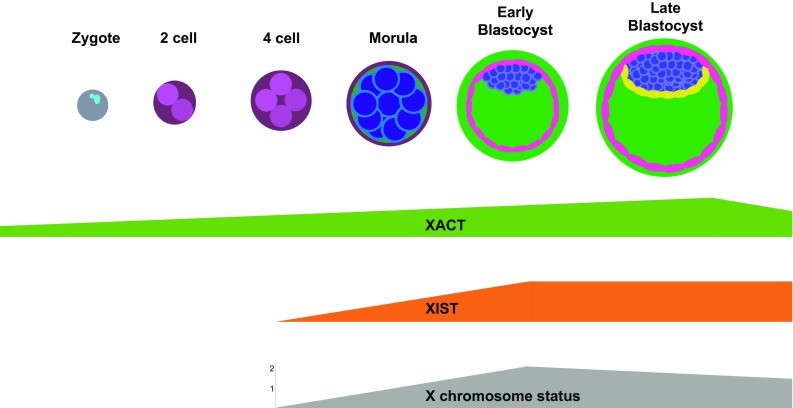Recent advances in stem cell biology have dramatically elevated the understanding of molecular and mobile mechanism of pluripotency and cell destiny willpower.
Additionally, pluripotent stem cells (PSCs), together with embryonic stem cells (ESCs) and induced pluripotent stem cells (iPSCs), arose as important assets for illness modeling and mobile therapeutics.
Despite these developments, the epigenetic dysregulation in pluripotency such because the imprinting status, and X chromosome dosage compensation, and its penalties on future utility of PSCs but stay unresolved. In this evaluation, we are going to concentrate on the X chromosome regulation in human PSCs (hPSCs).
We will introduce the earlier findings in the dosage compensation course of on mouse mannequin, and make comparability with these of human programs. Particularly, the biallelic X chromosome activation status of human preimplantation embryos, and the regulation of the lively X chromosome by human particular lincRNA, XACT, can be mentioned. We will even focus on the current findings on increased order X chromosome structure using Hi-C, and irregular X chromosome status in hPSCs.

Organ regeneration based mostly on developmental biology: previous and future.
In this decade, nice progress has been made in the sector of organ regeneration by incorporating rising ideas from the fields of stem cell biology and developmental biology, and this progress has pioneered a new frontier in regenerative medication.
The era of bioengineered organ germ-utilizing, fate-determined, organ-inductive epithelial and mesenchymal cells has supplied proof for the idea of useful organ regeneration in vivo.
Organoid research have verified that just about all organs might be generated in the type of a mini-organ by recapitulating embryonic physique patterning and establishing an organ-forming subject amongst self-organizing pluripotent stem cells by using cytokines that mimic the patterning and positional indicators of organogenesis.
More not too long ago, the regeneration of an integumentary organ system composed of a number of organs, together with hair follicles, has been achieved, demonstrating that regenerative medication is forthcoming.
In this evaluation, we are going to introduce present analysis developments geared toward regenerating a useful three-dimensional (3D) organ, and we are going to focus on the potential use of those current achievements and future instructions wanted to comprehend the next-generation of regenerative remedy for organ substitute.

